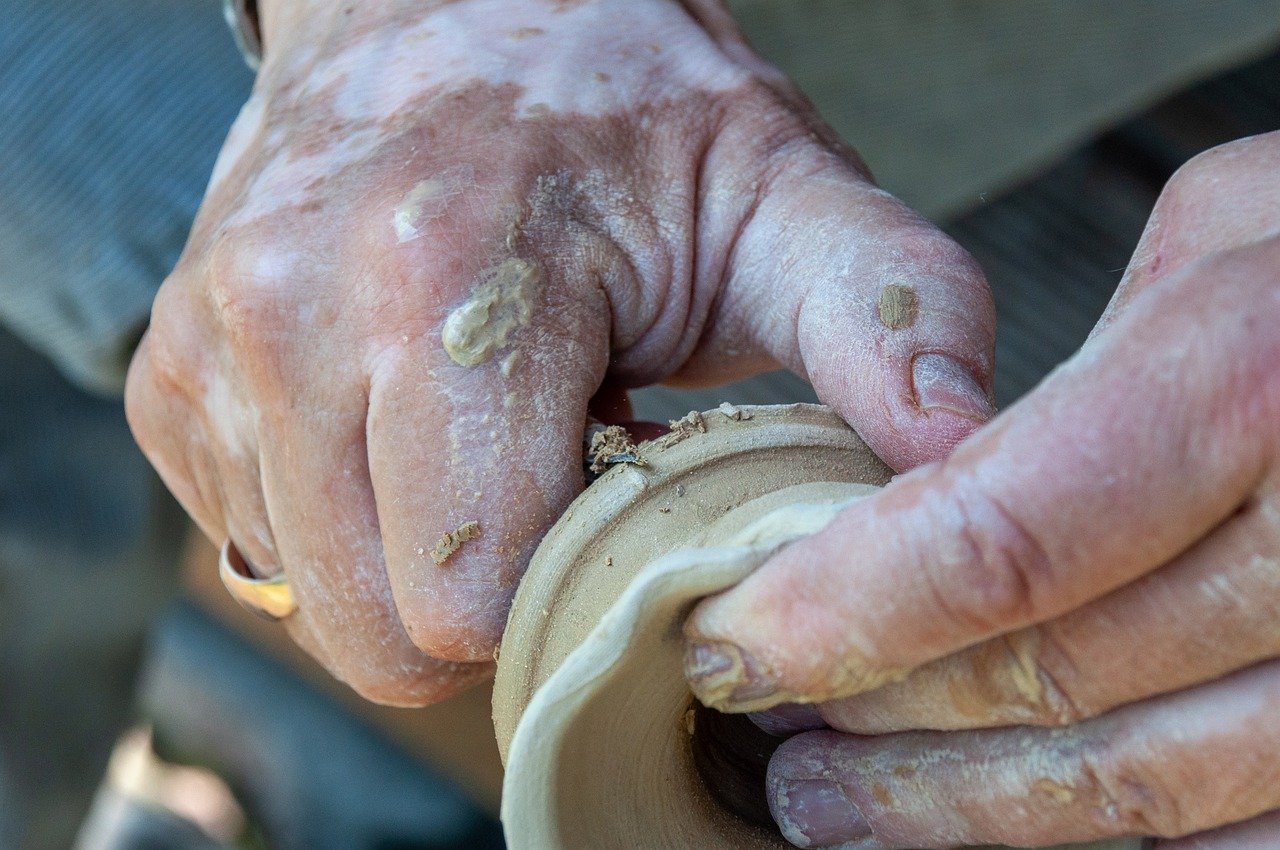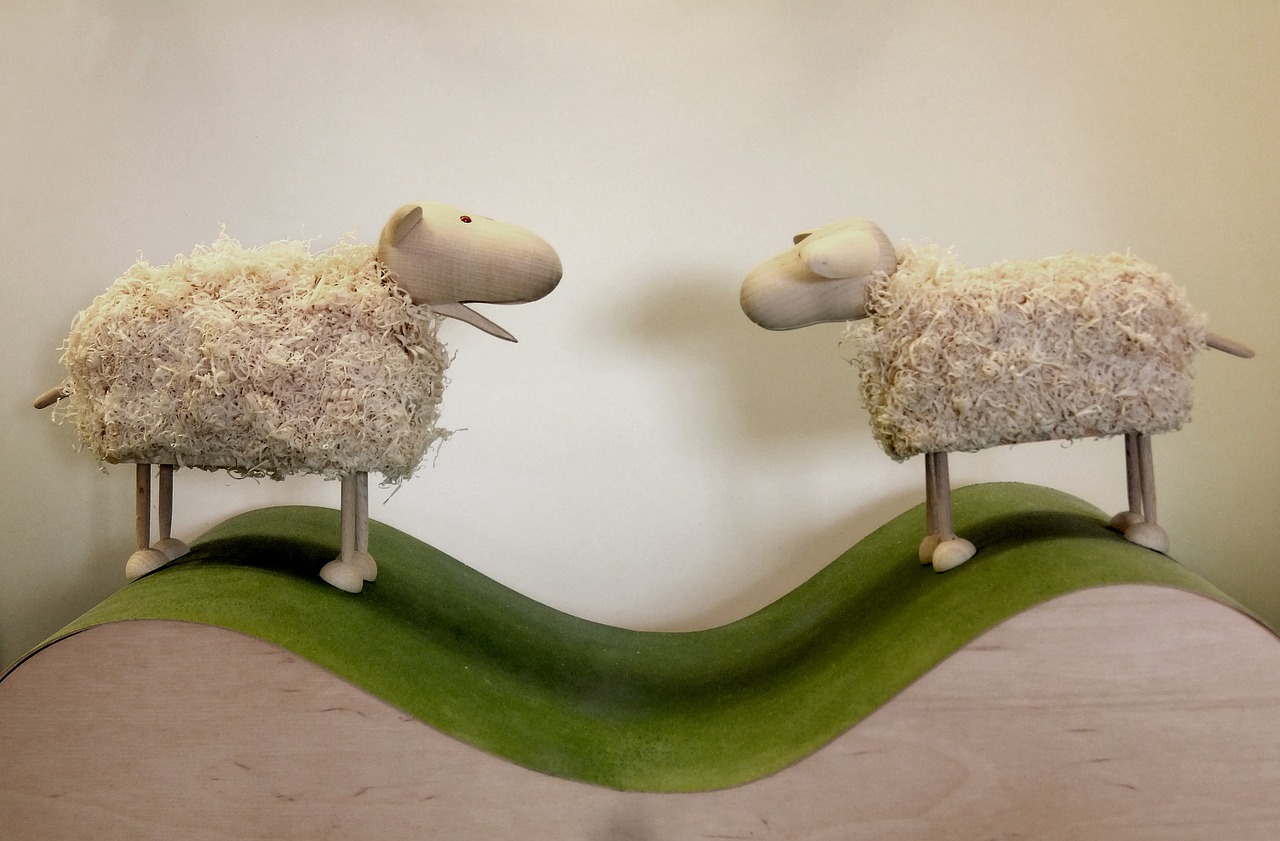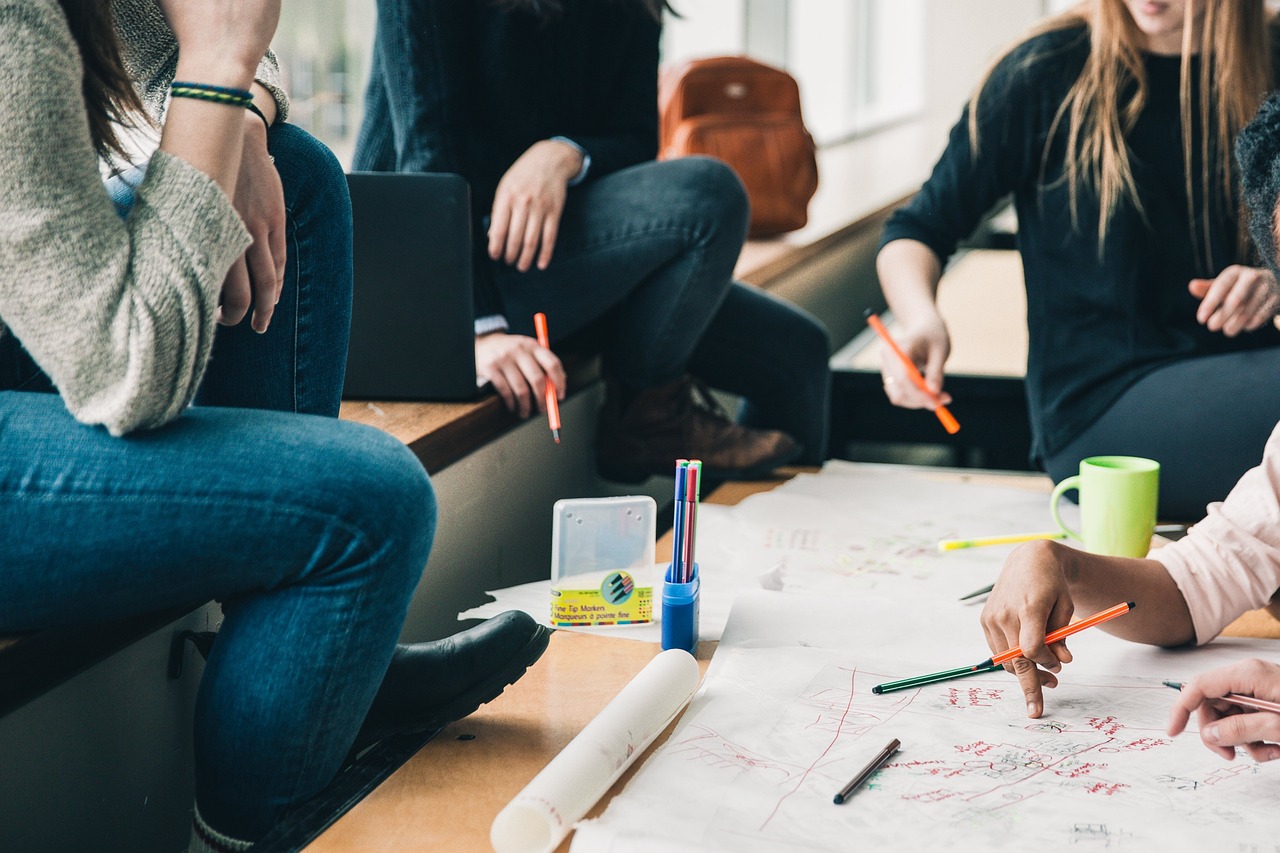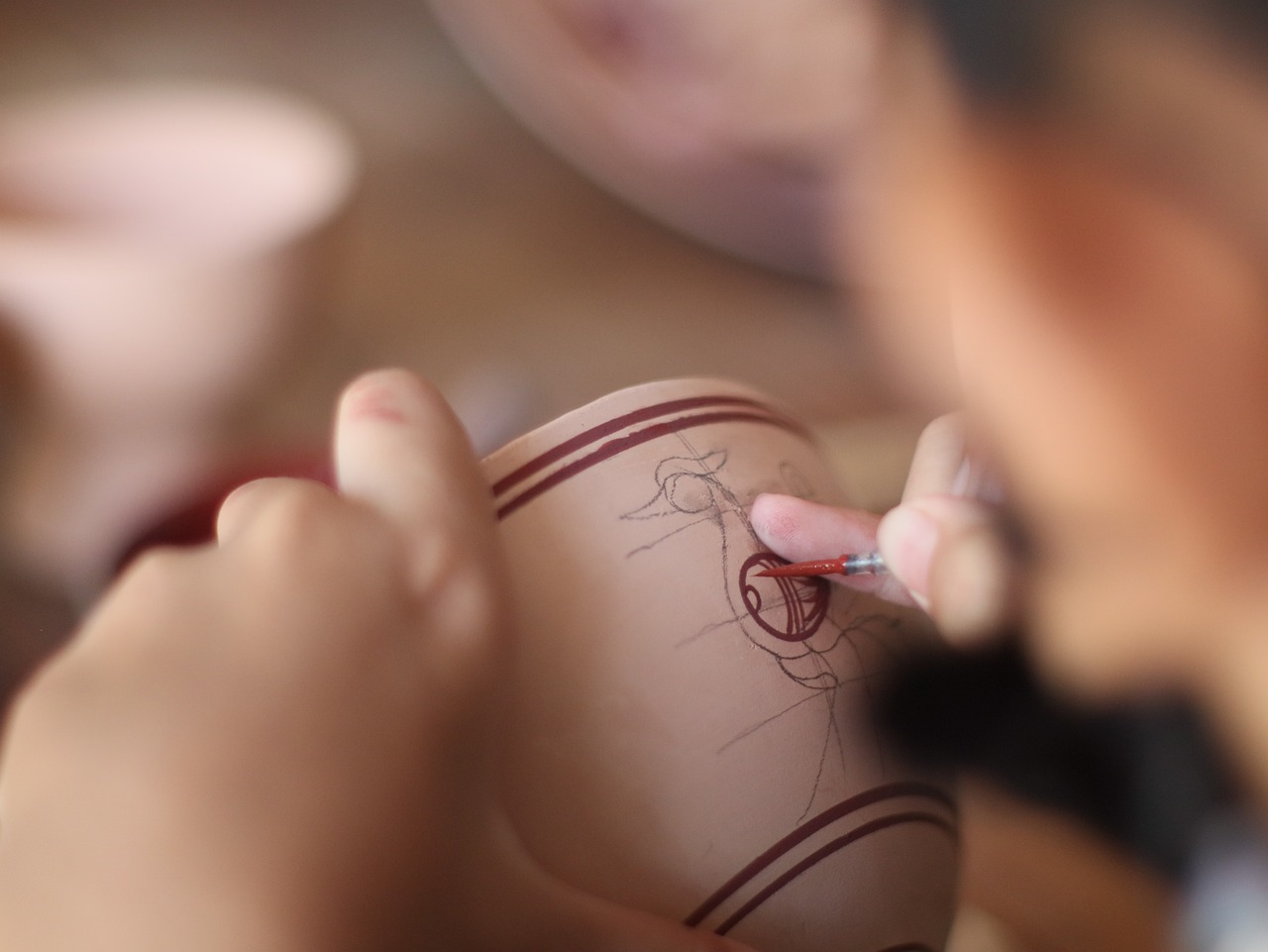Nurturing Mindfulness through Craft Activities for Kids
In today's fast-paced world, where distractions are just a click away, nurturing mindfulness in children is more important than ever. Craft activities provide an exciting avenue for kids to engage their creativity while also learning to be present in the moment. Imagine a child, paintbrush in hand, fully immersed in the vibrant colors swirling on a canvas. This is not just art; it’s a powerful practice that fosters emotional well-being and enhances focus. By integrating mindfulness into craft sessions, parents and educators can help children develop essential life skills that contribute to healthier mental habits as they grow.
Engaging in craft activities allows children to explore their thoughts and feelings in a safe and enjoyable environment. When kids focus on creating something with their hands, they naturally shift their attention away from the chaos of the outside world. This process can be likened to meditation; both require concentration and a connection to the present. The beauty of craft activities is that they can be tailored to suit various age groups and interests, making them accessible and enjoyable for everyone.
Moreover, craft activities can serve as a wonderful bonding experience between parents and children. Imagine sitting together at a table, surrounded by colorful materials, laughter filling the air as you create something beautiful. It’s not just about the final product; it’s about the shared experience, the stories told, and the memories made. This nurturing environment encourages open communication, allowing children to express themselves freely while also learning to listen and appreciate the thoughts of others.
In the following sections, we will delve deeper into the importance of mindfulness in childhood, explore specific craft activities that promote mindfulness, and provide practical tips for incorporating mindfulness into craft time. Whether you are a parent looking to enrich your child's life or an educator aiming to create a mindful classroom, this guide will offer valuable insights and project ideas to get started!

The Importance of Mindfulness in Childhood
Mindfulness is more than just a buzzword; it's a powerful tool that can shape the emotional and mental landscapes of children. In a world filled with distractions, teaching kids to be present helps them develop essential life skills. Think about it: when children learn to focus on the moment, they not only enhance their emotional resilience but also improve their ability to concentrate. This foundational skill can lead to healthier mental habits as they grow, allowing them to navigate life's challenges with greater ease.
But what exactly does it mean to be mindful? In simple terms, mindfulness is the practice of being fully aware of the present moment without judgment. For children, this means tuning into their thoughts, feelings, and surroundings. Imagine a young child playing outside, completely absorbed in the sensation of grass beneath their feet or the sound of leaves rustling in the wind. This level of engagement not only fosters creativity but also reduces stress and anxiety.
Research shows that children who practice mindfulness exhibit better emotional regulation, improved focus, and enhanced social skills. These are crucial attributes that can help them build strong relationships and succeed academically. Mindfulness acts like a mental gym, strengthening their ability to handle emotions and challenges. Here’s a quick look at some of the key benefits:
| Benefit | Description |
|---|---|
| Emotional Regulation | Helps children manage their emotions effectively, reducing impulsivity and frustration. |
| Improved Focus | Enhances concentration, making it easier for kids to engage in tasks and learn new information. |
| Social Skills | Encourages empathy and understanding, leading to better interactions with peers and adults. |
| Stress Reduction | Provides tools to cope with stress and anxiety, promoting overall well-being. |
Incorporating mindfulness into a child's daily routine can be as simple as taking a few deep breaths or engaging in a mindful craft activity. The key is to create opportunities for kids to practice being present. When parents and educators actively promote mindfulness, they are equipping children with the tools they need to thrive in an increasingly chaotic world.
Ultimately, fostering mindfulness in childhood is about more than just teaching a skill; it's about nurturing a mindset that will serve children throughout their lives. So, why not start today? Simple practices can lead to profound changes, setting the stage for a future filled with emotional intelligence and resilience.

Craft Activities that Promote Mindfulness
Engaging children in craft activities is not just about creating something beautiful; it's a powerful way to cultivate mindfulness. When kids immerse themselves in these creative processes, they learn to be present in the moment, which can significantly enhance their awareness and appreciation for the world around them. Mindfulness, in essence, is about focusing on the here and now, and what better way to do this than through hands-on activities that spark their imagination?
Crafting can serve as a natural antidote to the hustle and bustle of daily life, providing a sanctuary where kids can let their minds roam free while also honing their focus. As they work with their hands, whether it's molding clay, painting, or assembling a collage, they experience a sense of flow that helps reduce stress and anxiety. This state of flow is characterized by complete absorption in the task at hand, which is a core principle of mindfulness.
To truly harness the benefits of mindfulness through craft, it's essential to choose activities that encourage exploration and self-expression. Here are a couple of craft ideas that not only promote creativity but also nurture mindfulness:
- Nature-Inspired Crafts: By incorporating elements from nature, such as leaves, flowers, or stones, children can develop a deeper connection with their environment. This connection fosters a sense of appreciation for the beauty around them, which is a key component of mindfulness.
- Mindful Coloring and Drawing: These activities allow children to express their thoughts and feelings in a relaxed manner. The repetitive motions of coloring can be incredibly soothing, helping kids to center themselves and focus on the present moment.
Moreover, the act of creating something unique can boost a child's self-esteem and sense of accomplishment. When they see their finished project, it serves as a tangible reminder of their creativity and effort. This can be particularly empowering, reinforcing the idea that the journey of creation is just as important as the final product. It’s like planting a seed; the joy is not just in the flower that blooms but also in the nurturing process that leads to its growth.
In summary, craft activities that promote mindfulness are not merely fun and engaging; they are vital tools for emotional well-being and development. By encouraging children to slow down, focus, and immerse themselves in the creative process, we help them build resilience and a deeper understanding of their emotions. So, gather some supplies, unleash your creativity, and watch as your child blossoms into a more mindful and present individual!

Nature-Inspired Crafts
Engaging children in opens up a world of creativity and mindfulness, allowing them to connect deeply with the environment around them. Imagine your child stepping outside, feeling the cool breeze on their face, and gathering materials that nature has generously provided. This hands-on experience not only fosters a sense of appreciation for the outdoors but also encourages children to observe and reflect on the beauty in the simplest of things. Whether it's the vibrant colors of leaves, the textures of rocks, or the intricate patterns of flowers, nature offers endless inspiration for craft projects.
One of the most delightful aspects of nature-inspired crafts is that they can be both educational and fun. For instance, while collecting leaves for a project, children can learn about different types of trees and the changing seasons. This combination of learning and creativity can be incredibly rewarding. Additionally, these crafts often incorporate elements of sustainability, teaching children the importance of respecting and preserving the environment. They can use recycled materials or natural items, making the crafting process not just creative but also eco-friendly.
Here are a couple of engaging project ideas that exemplify the beauty of nature-inspired crafts:
- Leaf Printing: This technique involves using leaves as stamps to create beautiful prints on paper. Children can experiment with different leaf shapes and colors, learning about the diversity of plants while expressing their artistic flair.
- Rock Painting: Collecting smooth stones from a nearby park or garden can lead to a calming and reflective activity. Children can paint these rocks with their favorite designs or messages, which they can later display in their rooms or give as gifts.
These activities not only spark creativity but also promote mindfulness. As children focus on the textures, colors, and shapes of the materials they are using, they become more present in the moment, reducing stress and enhancing their emotional well-being. It’s like giving them a mini-vacation from the hustle and bustle of everyday life, where they can immerse themselves in the soothing embrace of nature.
In summary, serve as a fantastic way to nurture a child’s creativity while instilling a sense of mindfulness and appreciation for the world around them. It’s an opportunity for parents and educators to guide children toward a deeper understanding of their environment, all while having fun and creating cherished memories.

Leaf Printing Techniques
Leaf printing is not just a craft; it's a delightful journey into the world of nature that captivates young minds. Imagine the thrill of venturing outside, collecting vibrant leaves of various shapes and sizes, and then transforming them into beautiful pieces of art. This technique encourages children to explore the textures, colors, and forms that nature provides, fostering a sense of appreciation for the environment. By engaging in leaf printing, kids learn to be observant and mindful, focusing on the intricate details of each leaf while expressing their creativity.
To get started with leaf printing, you only need a few simple materials: leaves, paint, and paper. The process is straightforward yet incredibly rewarding. First, gather a variety of leaves – think about using different types such as oak, maple, and ferns. Each leaf brings its unique character to the project. Next, choose non-toxic paint in vibrant colors that will make the prints pop. Here’s how you can do it:
- Prepare the Workspace: Lay down some newspaper or a plastic sheet to protect your surfaces. This will make cleanup a breeze!
- Paint the Leaves: Using a paintbrush, apply a thin layer of paint on one side of the leaf. Encourage children to use different colors for a more dynamic print.
- Press and Print: Carefully place the painted side of the leaf onto a piece of paper. Press down gently to ensure the paint transfers well.
- Reveal the Art: After lifting the leaf, admire the unique print left behind. Each print will be different, showcasing the beauty of nature.
This hands-on activity not only enhances creativity but also provides a sensory experience that is deeply rooted in mindfulness. As children engage in this process, they learn to appreciate the beauty around them, becoming more present in the moment. They can even use their prints to create cards, bookmarks, or wall art, turning their creations into cherished keepsakes.
Moreover, leaf printing can be an excellent opportunity to introduce discussions about nature and sustainability. Talk to your kids about the importance of trees and plants, and how we can protect our environment. This can lead to a deeper understanding and appreciation of the world we live in, encouraging eco-friendly habits from a young age.
In summary, leaf printing is a fantastic craft that combines creativity, mindfulness, and environmental awareness. It’s not just about making art; it’s about connecting with nature and nurturing a sense of well-being in children. So, gather those leaves, let the paint flow, and watch as your child’s imagination takes flight!
1. What types of leaves work best for printing?
Generally, leaves that have a distinct shape and texture work best. Consider using broad leaves like oak or maple, as they hold more paint and create clearer prints.
2. Can I use regular paint for leaf printing?
While you can use regular paint, it’s best to opt for non-toxic, washable paints, especially if younger children are involved. This ensures safety and easier cleanup.
3. How do I clean up after a leaf printing session?
Cleanup is simple! Just wash any brushes and tools with warm soapy water. If you used newspaper or plastic sheets to protect your workspace, just roll them up and dispose of them.
4. Can leaf printing be done indoors?
Yes, leaf printing can be done indoors as long as you cover your work area to prevent paint spills. Just ensure there’s enough ventilation if you’re using paint.

Rock Painting for Reflection
Rock painting is not just a fun craft; it's a powerful medium for self-expression and reflection. Imagine a child sitting quietly, a smooth stone in hand, contemplating what colors to use and what designs to create. This simple act can transform into a profound journey of self-discovery. As children select colors that resonate with their emotions, they engage in a therapeutic process that encourages them to explore their feelings in a safe and creative way.
One of the beautiful aspects of rock painting is its accessibility. All you need are some rocks, paints, and brushes. This simplicity allows children to focus on the creative process rather than the end result. They can express their thoughts, feelings, and even their dreams on a canvas that is as unique as they are. Each stroke of paint can be a reflection of their inner world, making it a delightful way to practice mindfulness.
Moreover, rock painting can serve as a conversation starter. Once the rocks are painted, children can share their creations with family and friends, explaining the meaning behind their artwork. This sharing fosters connections and builds confidence, as they articulate their thoughts and feelings. It’s incredible how a simple rock can become a vessel for communication and emotional expression!
To enhance the experience, parents and educators can introduce a few mindful practices before starting the painting session. For instance, taking a moment to breathe deeply and set intentions can help children ground themselves. This could be as simple as asking, “What colors represent how you feel today?” or “What do you want to express through your art?” These questions not only spark creativity but also encourage children to connect with their emotions.
In addition, here are a few tips to make rock painting even more meaningful:
- Choose the Right Rocks: Look for smooth, flat stones that are easy to paint on. A variety of sizes can inspire different designs.
- Use Natural Elements: Incorporate natural materials like leaves or flowers into the painting process for added inspiration.
- Encourage Storytelling: Ask children to create a story around their painted rock, enhancing their imaginative skills.
Ultimately, rock painting is more than just an art project; it’s a mindful practice that nurtures emotional well-being. It allows children to slow down, reflect, and express themselves in a world that often moves too fast. So, gather some rocks, unleash your creativity, and watch as your child blossoms through the art of reflection!
Q1: What materials do I need for rock painting?
A1: You will need smooth rocks, acrylic paints, paintbrushes, and optionally, sealant to protect the finished art.
Q2: Can rock painting be done indoors?
A2: Yes, rock painting can be done indoors, but it’s best to cover surfaces to avoid paint stains. Ensure good ventilation if using strong-smelling paints.
Q3: How does rock painting promote mindfulness?
A3: Rock painting encourages children to focus on the creative process, express their feelings, and engage in a calming, meditative activity.
Q4: What age group is suitable for rock painting?
A4: Rock painting is suitable for children of all ages, with supervision for younger kids to ensure safe use of materials.

Mindful Coloring and Drawing
Coloring and drawing are not just fun activities for kids; they are also powerful tools for mindfulness. When children engage in these artistic endeavors, they enter a world where their imagination can run wild, and their emotions can be expressed freely. This process encourages them to be present in the moment, allowing their minds to focus solely on the colors, shapes, and patterns they create. It’s like a mini-vacation for their brains, where stress and distractions fade away, leaving only the joy of creation.
One of the most beautiful aspects of coloring and drawing is the meditative quality they possess. As children pick up their crayons or paintbrushes, they often fall into a rhythm, repeating motions that can be incredibly soothing. This repetitive action is akin to a gentle wave, washing over them and helping to calm their thoughts. In a world filled with noise and chaos, this simple act of creating can serve as a grounding experience, promoting relaxation and concentration.
Moreover, these activities provide an excellent opportunity for children to express their thoughts and feelings. Whether they are coloring a picture of their favorite animal or drawing a scene from their imagination, they are communicating something about themselves. This expression is vital for emotional development, as it helps children to process their feelings and understand their emotions better. Just like a storyteller weaving a tale, children become the authors of their own experiences through art.
To enhance the mindfulness aspect of coloring and drawing, parents and educators can introduce a few simple practices:
- Encourage children to take a moment before they start to breathe deeply and think about what they want to create.
- Suggest that they focus on the colors and textures, noticing how each shade feels as they apply it to the paper.
- Remind them that there is no right or wrong in art; the process is what matters most.
By integrating these practices, children can transform their coloring and drawing sessions into mindful experiences. They learn to appreciate the journey of creating art rather than fixating solely on the final product. This shift in perspective fosters a sense of patience and presence, which are essential qualities for emotional resilience as they grow.
Q1: How can coloring and drawing improve mindfulness in children?
A1: Coloring and drawing allow children to focus on the present moment, helping them relax and express their emotions. The repetitive motions involved can also promote a meditative state, enhancing their overall mindfulness.
Q2: What materials are best for mindful coloring and drawing?
A2: Any materials can work, but using high-quality colored pencils, markers, or watercolor paints can enhance the experience. It's also beneficial to provide a variety of coloring books or blank paper to inspire creativity.
Q3: Can mindful coloring and drawing be done alone or in groups?
A3: Both options are great! Individual coloring allows for personal expression, while group activities can foster social connections and shared experiences.
Q4: How often should children engage in mindful coloring and drawing?
A4: Encouraging children to engage in these activities regularly, even for short periods, can be beneficial. Aim for at least a few times a week to help them develop a routine that promotes mindfulness.

Incorporating Mindfulness into Craft Time
Integrating mindfulness practices into craft sessions is like adding a sprinkle of magic to the creative process. It transforms ordinary craft time into a journey of self-discovery and emotional growth. When children engage in craft activities, they're not just creating art; they're learning to appreciate the moment, the materials, and their emotions. Imagine a bustling craft room filled with laughter and the sounds of scissors snipping paper, but amidst that, there's a calmness that envelops the space, allowing children to focus deeply on their creations. This is the essence of mindfulness in craft time.
To truly incorporate mindfulness, it's essential to create an environment that fosters peace and concentration. This can be achieved by:
- Minimizing distractions: Turn off the TV, silence phones, and create a designated craft area free from interruptions.
- Using calming colors: Decorate the craft space with soft, soothing colors that promote relaxation.
- Playing soft music: Gentle background music can set the tone and help children feel more centered.
Moreover, incorporating short mindfulness exercises before diving into the craft can help children center themselves. These exercises can be as simple as taking a few deep breaths, stretching, or even a brief moment of silence to observe their surroundings. For instance, before starting a painting project, you might encourage the children to close their eyes and visualize their favorite colors or imagine a peaceful scene. This not only calms their minds but also opens them up to a world of creativity.
As they begin their craft, remind them to focus on the process rather than the outcome. This shift in perspective is crucial. Instead of asking, "What are you making?" encourage them to explore questions like, "How does this color feel to you?" or "What does this texture remind you of?" Such inquiries invite them to connect with their emotions and thoughts, deepening their mindfulness practice.
Lastly, it's beneficial to reflect on the craft experience after completion. Encourage children to share their thoughts about what they created, how they felt during the process, and what they learned. This reflection not only reinforces their mindfulness practice but also helps them articulate their feelings and experiences, fostering emotional intelligence.
| Question | Answer |
|---|---|
| How can I encourage my child to be more mindful during craft activities? | Start by creating a calm environment, guiding them through mindfulness exercises, and focusing on the process rather than the end product. |
| What are some easy mindfulness exercises for kids? | Simple exercises include deep breathing, stretching, or observing their surroundings for a few moments before starting their craft. |
| Can mindfulness in crafts help with emotional regulation? | Absolutely! Mindfulness practices can enhance emotional awareness and help children manage their feelings more effectively. |

Setting the Right Atmosphere
Creating the right atmosphere for craft activities is like setting the stage for a captivating play; it can significantly enhance the overall experience for children. Imagine walking into a room filled with soft, natural light, the gentle sound of nature in the background, and a space that invites creativity. This kind of environment not only encourages children to dive into their projects but also fosters a sense of calmness and focus. To achieve this, consider the following elements:
- Lighting: Use soft, diffused lighting to create a warm ambiance. Natural light is ideal, so try to position craft tables near windows. If that’s not possible, opt for warm LED lights that mimic daylight.
- Sound: Incorporate soothing background music or nature sounds. This can help drown out distractions and create a peaceful atmosphere. Think gentle instrumental music or even the sounds of a flowing stream.
- Space Arrangement: Organize the craft area to minimize clutter. A tidy workspace allows children to focus on their activities without feeling overwhelmed. Provide each child with their own space to work freely.
- Materials: Have all necessary materials within reach but organized neatly. This accessibility encourages children to explore and engage without the frustration of searching for supplies.
Moreover, consider adding elements that promote sensory engagement. For instance, incorporating textures—like soft fabrics or natural items—can stimulate their senses and enhance their creativity. You might even include a small plant or some fresh flowers on the table. These touches not only beautify the space but also encourage children to appreciate the little wonders of nature.
Ultimately, the goal is to create an environment that invites children to be fully present in their craft activities. When they feel comfortable and inspired, they are more likely to express themselves freely and embrace the process of creation. Remember, it’s not just about crafting something beautiful; it’s about nurturing their minds and spirits through the art of making.
Q1: How can I encourage my child to be more mindful during craft activities?
A1: You can encourage mindfulness by setting a calm atmosphere, guiding them through breathing exercises before starting, and reminding them to focus on the process rather than the final product.
Q2: What types of crafts are best for promoting mindfulness?
A2: Nature-inspired crafts, coloring, and drawing are excellent options. Activities like leaf printing and rock painting also provide opportunities for self-expression and reflection.
Q3: How can I minimize distractions during craft time?
A3: Create a designated craft area that is free from distractions. Turn off electronic devices and keep the space organized to help children concentrate on their projects.
Q4: Can mindfulness practices be incorporated into other activities?
A4: Absolutely! Mindfulness can be integrated into various activities, such as reading, cooking, or even during playtime. The key is to encourage presence and appreciation for the moment.

Guided Mindfulness Practices
Incorporating into craft activities can significantly enhance children's experience, making it more enriching and fulfilling. Imagine starting a craft session not just with scissors and glue, but with a moment of calm and focus. This simple act can transform the way children engage with their creative projects. Before diving into the colorful chaos of crafting, take a few minutes to center their minds. You might be surprised at how a little mindfulness can set the tone for a productive and enjoyable session!
One effective practice is to begin with a short breathing exercise. Encourage children to sit comfortably, close their eyes, and take deep breaths. They can inhale slowly through their noses, hold for a moment, and exhale gently through their mouths. This simple technique helps ground them, making it easier to concentrate on the task at hand. You can guide them by saying, “Let’s take a moment to breathe. Imagine you’re filling your tummy with air like a balloon, and then let it all out slowly.” This analogy not only simplifies the concept but also makes it fun!
Another engaging practice involves visualization. Ask them to picture a serene place, perhaps a tranquil forest or a sunny beach. As they craft, they can keep this image in their minds, allowing it to inspire their creativity. You might say, “As you paint or cut, think of the colors and textures in your special place. Let those feelings guide your hands.” This connection between their craft and their mental imagery fosters a deeper sense of presence and engagement.
To further enrich the experience, consider integrating mindful moments throughout the crafting process. For instance, after completing a section of their project, invite them to pause and reflect. Questions like “What do you like about what you’ve created so far?” or “How does this make you feel?” can encourage self-expression and emotional awareness. These reflective pauses not only deepen their connection to the craft but also cultivate a sense of gratitude for their creative journey.
Lastly, you might incorporate nature sounds or calming music during craft time. The right auditory backdrop can enhance mindfulness by creating a soothing atmosphere. You can create a playlist of gentle sounds or instrumental music that resonates with the theme of your craft. For example, if they are doing nature-inspired crafts, sounds of chirping birds or rustling leaves can elevate their experience and make them feel more connected to the environment.
In summary, integrating guided mindfulness practices into craft activities not only enriches the creative process but also equips children with valuable skills for emotional regulation and focus. By fostering an atmosphere of calm and presence, children can truly appreciate the beauty of creation, both in their art and within themselves.
- What are some easy mindfulness exercises for kids? Simple breathing techniques, visualization, and reflective pauses during activities can be great starting points.
- How can crafts help with mindfulness? Crafts engage children in the present moment, allowing them to express emotions and reduce stress through creativity.
- Can mindfulness practices be incorporated into other activities? Absolutely! Mindfulness can be integrated into various activities like reading, playing, or even during meals.
Frequently Asked Questions
- What is mindfulness and why is it important for kids?
Mindfulness is the practice of being fully present and engaged in the moment. For kids, it’s crucial because it helps them develop emotional resilience, improve focus, and cultivate healthier mental habits as they grow. By fostering mindfulness, parents can support their children's emotional well-being and overall development.
- How can craft activities promote mindfulness in children?
Craft activities encourage kids to be present and engaged in the creative process. By focusing on textures, colors, and the act of creating, children can reduce stress and anxiety. These activities allow them to explore their emotions and express themselves, making mindfulness a natural part of their playtime.
- What are some examples of nature-inspired crafts?
Nature-inspired crafts include activities like leaf printing and rock painting. Leaf printing allows kids to explore the textures and colors found in nature, while rock painting promotes self-expression and reflection. Both activities help children connect with the outdoors and appreciate the beauty around them.
- How can I create a calming atmosphere for craft time?
To create a calming atmosphere, minimize distractions by choosing a quiet space and using soft lighting. You can also play gentle background music or nature sounds to enhance the experience. This helps children focus on their creative expression and enjoy the process of crafting.
- Can you suggest mindfulness exercises to do before crafting?
Absolutely! Simple mindfulness exercises like deep breathing or a short guided meditation can help center children before they start crafting. Encourage them to take a few moments to close their eyes, breathe deeply, and focus on their breath to prepare for a mindful crafting session.
- What benefits do coloring and drawing offer for mindfulness?
Coloring and drawing are fantastic for promoting mindfulness as they involve repetitive motions that can be quite meditative. These activities allow kids to express their thoughts and feelings creatively while helping them relax and concentrate, making them excellent tools for emotional regulation.



















